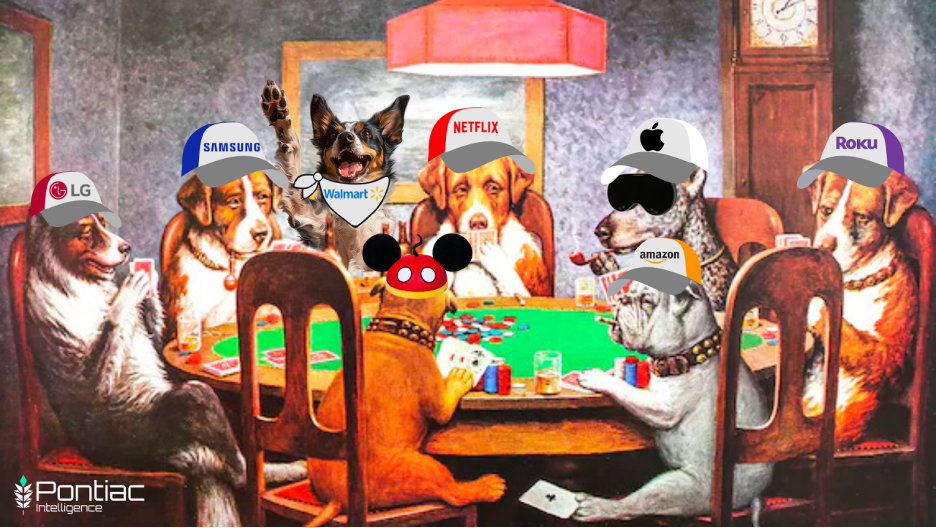When advertising first started, the transaction was 1:1.
An advertisers would contact a publisher, the publisher would quote a price, the advertiser would pay and get placement in a newspaper or a radio show or on TV.
As the number of publishers grew and the mediums on which to place ads grew, advertisers turned to agencies to manage their buys, and as the internet gained market share, publishers often turned to ad networks to find buyers.
Ad networks were the advertiser and agencies’ access point to inventory at scale with reduced contact points. An agency who worked with a couple ad networks could get the reach and results they needed for a simple, all in price. They didn’t control the buy and didn’t get transparency into what they were buying.
Ad networks flourished, and despite their inventory opacity, they became trusted tools that media agencies used to get their buying done.
Technology Advanced
As technology advanced, and the needs of the advertisers and agencies to get more control and transparency, ad networks became relics of an earlier age, and DSPs and SSPs became the tools that a “smart marketer” would use to access nearly infinite inventory with precision, control, transparency, and performance.
This new open exchange model opened the door for buyers to reach any publisher they wanted without relying on a pre-curated list from an ad network. Buying advertising on the Internet now had infinite possibilities rather than inventory restrictions, and DSPs became the access points to endless combinations of publishers.
For years, this type of buying proliferated and advertisers, agencies, publishers, and most of all middlemen (those DSPs and SSPs) made a lot of money.
But with any open market the opportunity for bad players to take advantage existed, and more and more instances of made for advertising websites, click farms, fraud, and other exploitative practices arose. The promise of an open exchange marketplace, where advertisers and publishers benefit at scale was no longer a widely tenable solution. The wrong players were making money, and effectively stealing from advertisers who were aiming to reach consumers.
Cookies as the Enabler
Cookies have been the great enabler of this problem. Advertisers felt comfortable buying whatever publisher inventory make fall into their hands as long as the audience was qualified with a cookie. Whether using third-party data or their own first party retargeting data, the cookie was that comfort blanket, their assurance that the publisher didn’t matter, people go all over the Internet, you’re going to reach your audience and you’re going to get results because the cookie is there.
The reality is cookies have led the industry astray. MFA sites have proliferated and fraud has not been stamped out.
As a result of this chaotic open market, we’re seeing a big shift back to a more controlled marketplace, very familiar to the ad networks of the past:
- Big retailers like Kroger, Walmart, Target, CVS, and others are offering retail media networks that access their customers across their owned and operated inventory as well as a list of preferred partners.
- The Trade Desk is shifting their positioning from the “Open Internet” to the “Premium Internet,” indicating that they are going to do more and more publisher curation to make it easier for buyers to navigate a complicated ad ecosystem.
- Netflix has announced that they are launching their own ad tech platform effectively an ad network of Netflix O&O inventory with potential extension through preferred partners.
These changes are not without issues. Many think the Trade Desk is in it just to push their UID2 as much as possible, and Netflix’s investment in ad serving and tech is to add more industry standard capabilities which they currently lack.
Publishers Regaining Power
But one way or another, trust and power returning to publishers rather than audiences. The credibility and quality of a publisher matters far more than checking a box that someone who has been to your website has seen an ad on some webpage that has a dozen or more advertisements layered on top of each other.
The technology we have built over the past decade and a half will enable us to execute media buys smarter, more efficiently, and more effectively, and the use of PMPs is going to be essential to rebuilding the trust in reaching actual consumers in the places where they actually are willing to consume content and see advertisements. Real publishers, real people, no fluff.
Just as CTV and streaming are starting to revert back to the model that cable brought in the 20th century, the broader advertising ecosystem seems to be reverting back to a more controlled place, trying to offset the sins of the past decade where advertisers were losing money to bad players, and fraud was rampant. It’s time to execute a better advertising strategy for all, so that real companies can make real money and bad players are no longer cutting into a system that just wants to sell products to people who might want to buy them.



